Retro Fashion Trends – Fashion is cyclical, and what was once trendy decades ago often finds its way back into mainstream style. Retro fashion trends for men are making a strong comeback, with classic styles from the 50s, 60s, 70s, 80s, and 90s influencing modern wardrobes. Whether it’s the sharp tailoring of the 50s, the bold prints of the 70s, or the casual streetwear of the 90s, retro fashion continues to inspire contemporary menswear. This article explores the key retro fashion trends for men, how to style them, and why they remain timeless.
The Evolution of Retro Fashion for Men
Before diving into specific trends, it’s essential to understand how fashion has evolved over the decades. Retro fashion is more than just old clothing; it reflects cultural shifts, technological advancements, and the personalities of different eras. The revival of these trends often incorporates modern tailoring and fabrics, making them more adaptable to today’s lifestyle.
1950s: The Golden Era of Menswear
The 1950s were all about sharp tailoring and polished looks. Men dressed to impress with clean lines and sophisticated details.
Key Trends from the 50s:
- Classic Suiting: High-waisted trousers paired with single or double-breasted jackets defined the decade.
- Bowling Shirts: Casual, loose-fitting, short-sleeve shirts with bold patterns gained popularity.
- Loafers & Brogues: Classic leather shoes added a touch of elegance to everyday outfits.
- Greaser Style: Leather jackets, white T-shirts, and denim jeans inspired by Hollywood icons like James Dean became an iconic casual look.
How to Wear 50s Style Today:
Pair high-waisted trousers with a tucked-in polo or a bowling shirt for a smart-casual look. Loafers or brogues complete the ensemble, adding a touch of sophistication.
1960s: The Mod and Beatnik Influence
The 60s were a revolutionary decade in fashion, driven by music, art, and youth culture.
Key Trends from the 60s:
- Slim-Fit Suits: The Mod look, popularized by The Beatles and The Rolling Stones, featured tailored suits with narrow lapels.
- Turtlenecks: A staple for both casual and formal wear, often layered under blazers.
- Chelsea Boots: Sleek and stylish, these boots became a Mod fashion essential.
- Bold Patterns: Psychedelic prints, paisley shirts, and bright colors reflected the era’s artistic influence.
How to Wear 60s Style Today:
Try a slim-fit suit in neutral tones with a black turtleneck and Chelsea boots. For a casual 60s vibe, opt for a paisley shirt and slim trousers.
1970s: The Era of Bold Fashion
The 70s were all about self-expression, with flamboyant styles, bright colors, and oversized silhouettes dominating the fashion scene.
Key Trends from the 70s:
- Flared Trousers: A defining element of 70s menswear, often paired with fitted shirts.
- Wide-Collar Shirts: Button-downs with exaggerated collars were a staple.
- Suede and Leather Jackets: A rugged yet stylish addition to any wardrobe.
- Platform Shoes: Worn with flared pants for a dramatic effect.
How to Wear 70s Style Today:
Flared trousers paired with a fitted turtleneck or a suede jacket bring back 70s charm without looking outdated.
1980s: The Decade of Power Dressing and Streetwear
The 80s saw the rise of power dressing alongside the birth of streetwear, influenced by hip-hop and sports culture.
Key Trends from the 80s:
- Oversized Blazers: Bold shoulder pads and loose cuts defined corporate fashion.
- Athletic Wear: Tracksuits, sneakers, and sports jerseys became everyday essentials.
- Denim-on-Denim: Acid-wash jeans paired with denim jackets were highly popular.
- Graphic T-shirts: Band tees and bold prints reflected pop culture influence.
How to Wear 80s Style Today:
Balance oversized blazers with fitted trousers, or embrace retro sportswear with a vintage tracksuit and sneakers.
1990s: The Rise of Minimalism and Grunge
The 90s saw a mix of laid-back minimalism and rebellious grunge fashion, both of which remain influential today.
Key Trends from the 90s:
- Baggy Jeans: Comfortable, oversized denim became a signature look.
- Plaid Flannel Shirts: Popularized by grunge bands like Nirvana.
- Bucket Hats: A casual accessory making a strong comeback.
- Windbreakers: Lightweight jackets in bold colors and patterns.
How to Wear 90s Style Today:
Pair baggy jeans with a vintage band tee and a flannel shirt for a grunge-inspired look. A bucket hat and windbreaker add a sporty touch.
Why Retro Fashion Trends Remain Popular
- Nostalgia Factor: Many men enjoy the vintage aesthetic as it connects them to past eras.
- Timeless Style: Well-tailored pieces from the past continue to look elegant.
- Sustainability: Vintage and second-hand clothing help reduce fashion waste.
- Versatility: Retro pieces can be easily integrated with modern wardrobes.
Final Words
Retro fashion trends for men are not just about dressing like it’s the past but reviving timeless styles with a modern twist. Whether you prefer the sophistication of the 50s, the boldness of the 70s, or the laid-back vibe of the 90s, there’s something for everyone in retro fashion.
FAQs
1. What are the easiest retro fashion trends to incorporate into a modern wardrobe?
Turtlenecks, denim jackets, loafers, and Chelsea boots are some of the easiest retro pieces to blend with modern styles.
2. Where can I buy retro-inspired clothing?
You can find retro fashion at thrift stores, vintage shops, online marketplaces, and brands that specialize in classic menswear.
3. How do I style retro pieces without looking outdated?
Balance retro items with modern basics. For example, pair vintage flared pants with a simple fitted t-shirt or mix a 70s suede jacket with slim-fit jeans.
4. Are retro fashion trends suitable for all ages?
Yes! Retro styles can be adapted to suit any age group, as long as they are worn with confidence.
5. What is the difference between vintage and retro fashion?
Vintage fashion refers to original clothing from past decades, while retro fashion includes new clothing inspired by past styles.
Embrace the best of retro fashion and make it your own with a modern twist!


